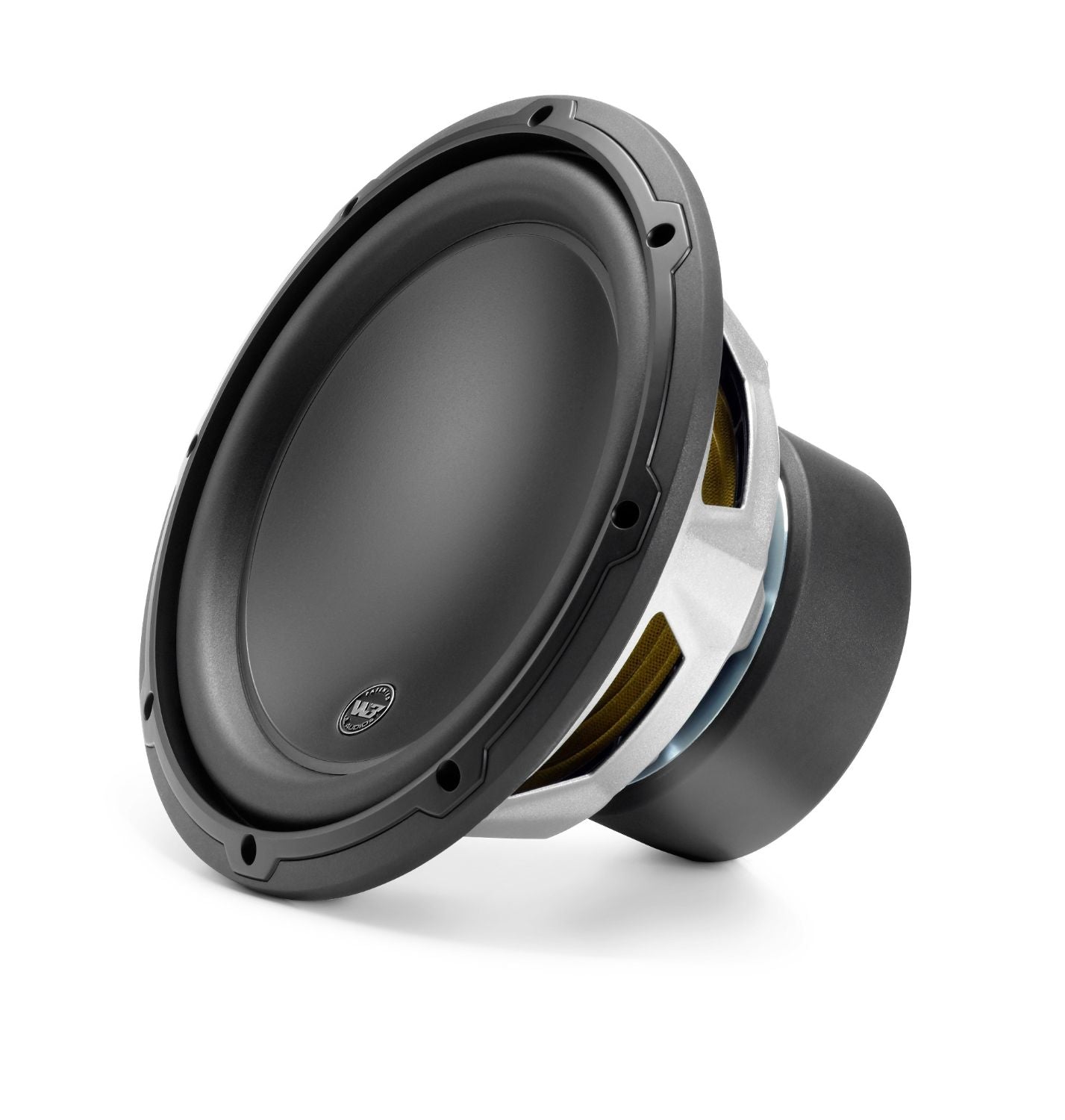Description
W3v3 10-inch Subwoofer (500 W, 4 Ω)
This acclaimed Subwoofer strikes an outstanding balance in power handling, enclosure requirements and excursion to deliver excellent results in medium power applications. Several exclusive JL Audio technologies and proprietary assembly techniques are applied to the 10W3v3 to enhance linearity and reliability.
The 10W3v3-4 is best used with amplifier power in the 150W – 500W range and is optimized to operate in a compact 0.625 cu. ft. (17.7 l) sealed enclosure, or a 1.125 cu. ft. (31.9 l) ported enclosure.
Dynamic Motor Analysis – DMA Optimized Motor
Summary:
JL Audio’s proprietary Dynamic Motor Analysis system is a powerful suite of FEA-based modeling systems, first developed by JL Audio in 1997 and refined over the years to scientifically address the issue of speaker motor linearity. This leads to vastly reduced distortion and faithfully reproduced transients… or put simply: tight, clean, articulate bass.
Detailed Information:
Since 1997, JL Audio has been at the forefront of Finite Element Analysis-based modeling of loudspeaker motors and suspensions. This research is aimed at decoding what we refer to as the “Loudspeaker Genome”… a project aimed at understanding the true behavior of loudspeakers under power and in motion. A major component of this integrated system is DMA (Dynamic Motor Analysis). Starting with the 15W3 and the W7 Subwoofers in the late 1990’s and early 2000’s, DMA has played an important role in the design of all JL Audio woofers sold today, including our component woofers.
DMA is a Finite Element Analysis (FEA)-based system, meaning that it takes a large, complex problem, breaks it down into small solution elements for analysis and then assembles the data to form an accurate, “big-picture” solution. DMA’s breakthrough is that it actually considers the effects of power through the coil as well as coil/cone position within the framework of a time-domain analysis. This gives us a highly accurate model of a speaker’s actual behavior under real power, something that the traditional Thiele-Small models or other low power measurements cannot do. Because DMA does not rely on a steady-state model, it is able to consider shifts in the circuit elements being analyzed. These modeling routines are intense, requiring hours to run for a whole speaker.
DMA is able to analyze the real effects of fluctuating power and excursion upon the magnetic circuit of the motor, specifically the dynamic variations of the “fixed” magnetic field. This delivers intensely valuable information compared to traditional modeling, which assumes that the “fixed” field produced in the air gap by the magnet and the motor plates is unchanging. DMA not only shows that this “fixed” field changes in reaction to the magnetic field created by current flowing through the voice coil, but it helps our engineers arrive at motor solutions that minimize this instability. Analyzing this behavior is critical to understanding the distortion mechanisms of a speaker motor and sheds light on the aspects of motor design that determine truly linear behavior:
- Linear motor force over the speaker’s operational excursion range
- Consistent motor force with both positive and negative current through the coil
- Consistent motor force at varying applied power levels
Our ability to fully analyze these aspects of motor behavior allows our transducer engineers to make critical adjustments to motor designs that result in extremely linear, highly stable dynamic loudspeaker motor systems.
The payoff is reduced distortion, improved transient performance and stellar sound quality.
USA Limited Warranty: One (1) year from the original date of purchase








